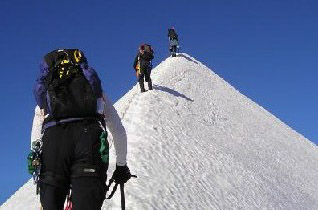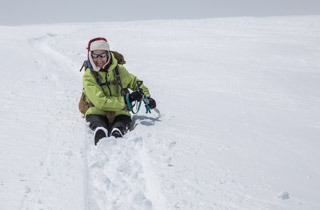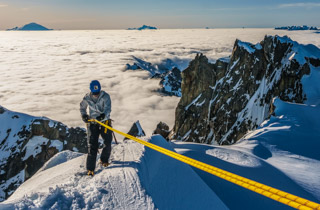Program Design Overview
Program Design Overview
Preparing Your Workout Program
Imagine that you have just placed a deposit for an exciting trip starting in six months. It will require getting in the best shape of your life, and you’re nervous about being ready in time. You have a goal, you’re committed to that goal, you have support, and you’re ready to start training. Now what?
Scenario
To illustrate how to create an appropriate program, we’re going to use a high-altitude trek in Nepal as our example, reaching 17,000′ elevation as its high point and lasting three weeks, with an optional scramble to 21,000′ in the middle of the trip requiring more technical skills.
When we create a program for a client, we first determine what components are needed to succeed and the relative importance of each, given a person’s goals. We evaluate what level of strength, strength endurance, power, speed, flexibility, sports skills, body structure, and cardiovascular endurance will be needed for the adventure. An assessment of the goal activity gives you target endpoints.

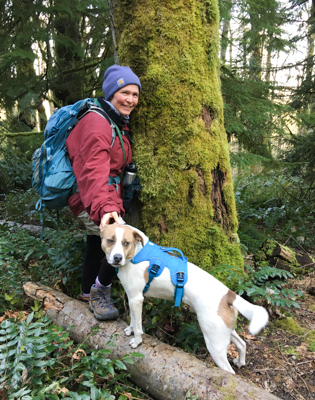
Needs Assessment
If you will be joining a guide, find out ahead of time how much weight you will be expected to carry (and if there will be support pack animals, Sherpa, or porters), what distance you will travel in total, and on the longest day, how much elevation you will gain in total and per day, how long the trip is (and how much water/food to bring), what you are expected to bring, and what physical activities you will be doing. If you are interested in participating in the scramble, find out what they screen for and if you need additional proof of skills to go with them, or what you’d do instead. Day of rest? side hike? sightsee? Maybe these are better options to consider. Play a video in your mind of when you first arrive so that you can imagine the kinds of questions you might need answers to.
Once you know the requirements, figure out the activities you need to train for. Three weeks of trekking in the high mountains of Nepal with yak support will require a different training program than a three-week exploratory trek without animal support and with a high altitude first ascent. Note that both are of the same duration, but require carrying different weights, with more skill and experience needed in the second case. The scramble scenario also requires greater recovery time, as you’d be adding 4,000′ on a “rest” day and then continuing with the rest of your group, with no recovery time, to finish the trek.
Self-Evaluation
Once you know the endpoints of your trip, the next step is figuring out your starting point, and how you compare it against the end goal. If a strength test on a 5th-class multi-pitch alpine climb leaves you with burning forearms, you may still have enough upper body strength for a trek and scramble that relies more heavily on legs and core. An ice climb might need more upper body endurance, a scramble and trek don’t. It may also mean that a more valid assessment of your starting point would be going on an eight-mile hike with 3,000′ of gain carrying fifteen pounds to see what your starting pace is.
Be honest with yourself about how you feel, where you feel weak, where you feel slow, but also what already feels good so you don’t spend a lot of time on an area where you’re already strong. Fix your weaknesses first. If you notice your hips are getting tight when you hike, you may want to add targeted hip and lower body stretches to manage the lack of mobility. If your knees feel weak or cranky on the descent, you’ll want to strengthen the glutes and quadriceps.
Work backward from your end goal in step-wise progression so that the weekly increments are comfortable and will not overwhelm your body or mind. Add no more than 10% per week (pack weight or distance) until you reach your target pack weight, then add a few back-to-backs to get ready for repeat pack carrying.
Mini-goals
Set some intermediate goals along the way to help you determine how effective your training program is. In a program lasting four months (16 weeks), you might set a hiking goal for 6 weeks and another at 10 weeks, then your first back-to-back at 12 weeks and another at 14. These mini-goals keep you motivated, provide you with training feedback, and allow you to adjust the training as needed. They also give you good benchmarks for when to change your strength program. In the first six weeks, train with unilateral exercises (single limb movements such as dips, lunges, step-ups and downs, one-arm rows, and presses) to make sure both sides of the body are working evenly. Keep repetitions in the 8-10 range and focus on perfect form.
In the middle block of four weeks, focus on building as much strength as possible, doing sets of 5-8 repetitions on bilateral exercises (working both limbs at the same time, in other words, pushups, deadlifts, squats, bench presses, pull-ups) so that in the last 4-6 weeks of training you can build stamina with lighter weights, higher repetitions (12-15) and shorter rest so that you are physiologically ready for the demands of high altitude and less usable oxygen. During each phase, focus on what you’re trying to do – get good form while building a foundation, build strength, top off your stamina – and adjust training parameters accordingly.
Building Blocks
Once you have your macroblocks in place (of 4-6 weeks each) it’s time to figure out what your weekly program will look like. In general, for high altitude mountaineering objectives such as this one, we recommend building to the following training by the time you are a month from your objective:
- Two weekly full-body strength workouts (45 minutes) spaced roughly 48-72 hours apart;
- One longer hiking objective building to 4-8 hours (minimum; depends on the needs of your goal trip) with target pack weight you’ll be carrying on the trip and 3000′ of elevation when possible (if you’re going to do the scramble);
- One mid-week pack intervals workout (using 5-10% more weight than your weekend outings as you’re training anaerobic conditioning for shorter periods) building to 45 minutes of stairs or hill climbing, along with core and leg strength
- Stretching 5-10 minutes per day or flexibility/mobility training such as Tai Chi or yoga
- Unweighted (i.e. no pack) vertical training (i.e. hills walking, stairs, trail running, incline treadmill, elliptical, step mill, stairclimber are all suitable) up to twice per week for anywhere from 45-90 minutes, again depending on starting point and end objective.
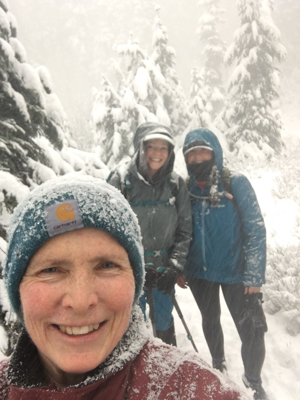
Sample Week
A sample week, therefore, a month before your objective might look like this:
- Monday OFF/Active Recovery
- Tuesday Strength and pack intervals
- Wednesday Unweighted hills walking
- Thursday OFF/Active Recovery
- Friday Strength
- Saturday/Sunday hikes, one for endurance, one unweighted (this would turn into back-to-back training, four and two weeks before your trip).
Be sure to include active recovery so you get suitable rest. Active recovery refers to unstructured movement that is below 65% of your max heart rate. It might include yoga, Tai Chi, flat biking, dog walking, gardening, playing frisbee or catch, and so forth.
Once you have your program designed, you’re ready to test it out and revise as you go. If you would like program design help, your Body Results coaches are happy to assist.


